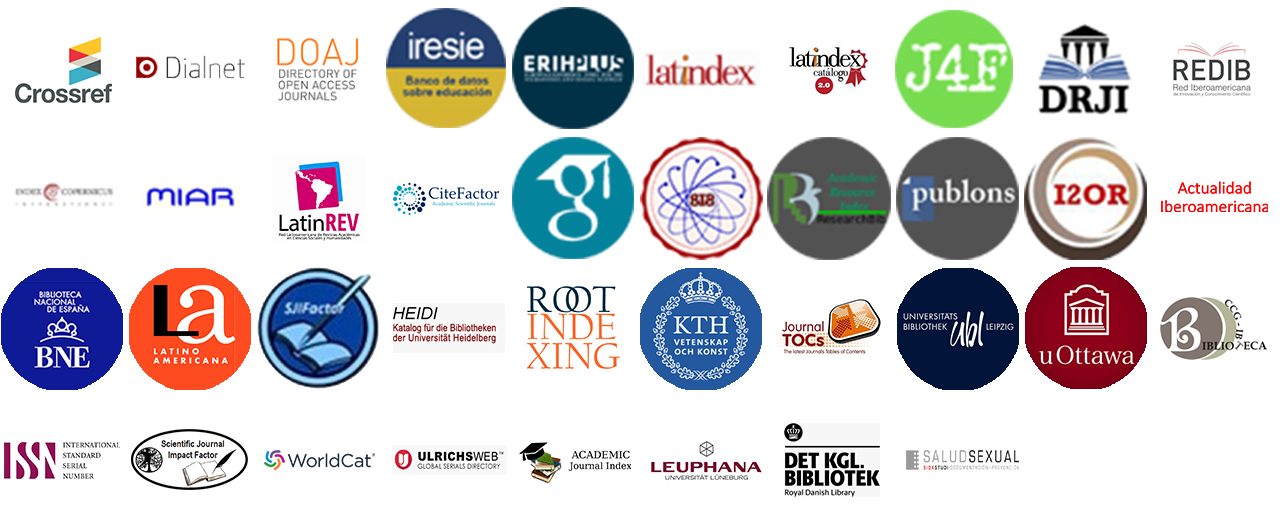Analysis of point-to-point communications with open-source LoRa simulations
DOI:
https://doi.org/10.36825/RITI.10.21.003Keywords:
IoT, Long-Range, Low Power, LoRa, LoRaWAN, OptimizedAbstract
With the new trends in IoT, more and more issues arise, such as the need to use long-range technologies and low power consumption to meet the requirements of mobility and access to remote locations, in response arise technologies such as LoRa and LoRaWAN, which allow implementations at low speeds with a long range and very low power consumption, These technologies are based on CSS (Chirp Spread Spectrum) transmission techniques, and both their physical layer and operating modes have been adapted to send short amounts of information in short periods of time, thus keeping the terminal node in an idle state while the data transmission is not being carried out, in order to reduce energy consumption; Thus, simulations of LoRa technologies are of great importance, both for research and for the design phase prior to implementation, especially when they are optimized for low computational consumption, as will be shown in this paper.
References
Andreu Dólera, A. (2019). Modelado de redes LoRaWAN aplicadas a la conservación preventiva de patrimonio cultural [Tesis de Maestría]. Universitat Politècnica de València. http://hdl.handle.net/10251/127816
Reynders, B., Qing, W., Pollin, S. (2018). A LoRaWAN module for ns-3: implementation and evaluation. 10th Workshop on ns-3. Surathkal, India. https://doi.org/10.1145/3199902.3199913
Fialho, V., Azevedo, F. (2018). Wireless Communication Based on Chirp Signals for LoRa IoT Devices. I-ETC : ISEL Academic Journal of Electronics Telecommunications and Computers, 4 (1), 1–5. http://dx.doi.org/10.34629/ipl.isel.i-ETC.51
Croce, D., Gucciardo, M., Mangione, S., Santaromita, G., Tinnirello, I. (2018). Impact of LoRa Imperfect Orthogonality: Analysis of Link-Level Performance. IEEE Comunications Letter, 2 (4), 796-799. https://doi.org/10.1109/LCOMM.2018.2797057
Al Homssi, B., Dakic, K., Maselli, S., Wolf, H., Kandeepan, S., Al-Hourani, A. (2021). IoT Network Design Using Open-Source LoRa Coverage Emulator. IEEE Access, 9, 53636–53646. https://doi.org/10.1109/ACCESS.2021.3070976
LoRa. (2022). Simulation of Network Coverage. https://lora.vsb.cz/index.php/simulation-of-network-coverage/
MATLAB. (2022). MATLAB - El lenguaje del cálculo técnico. https://la.mathworks.com/products/matlab.html
VE2DBE. (2022). Radio Mobile. https://www.ve2dbe.com/english1.html
Published
How to Cite
Issue
Section
License
Copyright (c) 2022 Revista de Investigación en Tecnologías de la Información

This work is licensed under a Creative Commons Attribution-NonCommercial-NoDerivatives 4.0 International License.
Esta revista proporciona un acceso abierto a su contenido, basado en el principio de que ofrecer al público un acceso libre a las investigaciones ayuda a un mayor intercambio global del conocimiento.
El texto publicado en la Revista de Investigación en Tecnologías de la Información (RITI) se distribuye bajo la licencia Creative Commons (CC BY-NC
 ), que permite a terceros utilizar lo publicado citando a los autores del trabajo y a RITI, pero sin hacer uso del material con propósitos comerciales.
), que permite a terceros utilizar lo publicado citando a los autores del trabajo y a RITI, pero sin hacer uso del material con propósitos comerciales.



